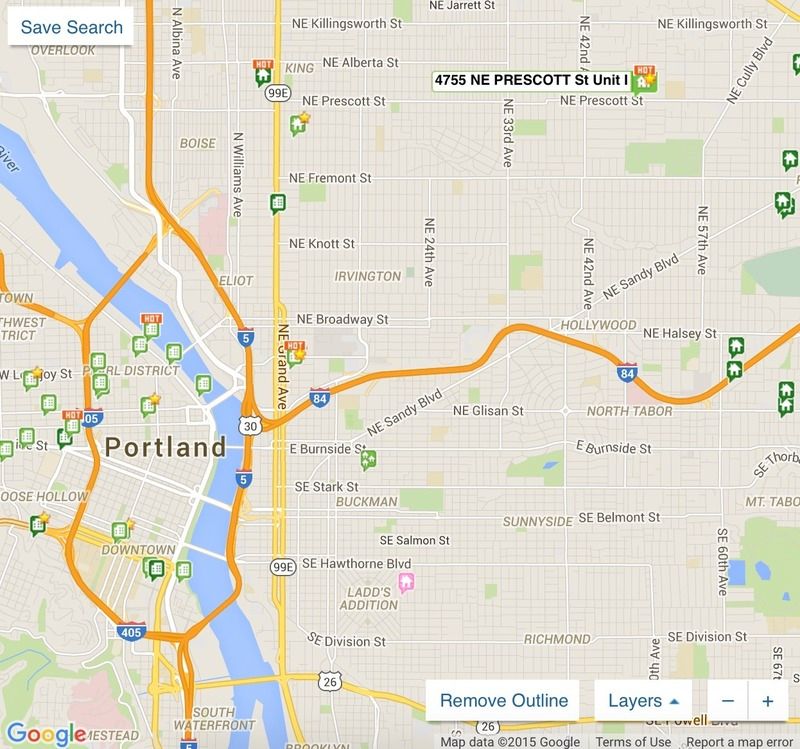I am far more concerned about the effects under zoning than I am of the effects over zoning. Whether it's South Waterfront, the Lloyd District, the West End of Downtown or Gateway, there are plenty of places where the zoning allows for much more intense development than has or is occurring. You cite the figure of 11,000 new apartments as if that's a lot, and yet as
BikePortland pointed out the cumulative growth in Portland's housing stock has consistently lagged its cumulative population growth. There is the short and simple reason for why rents and house prices in Portland are skyrocketing.
And if you really want to attack a neighborhood for being exclusively for the wealthy, why choose the Pearl? Here's a redfin map of homes for sale under $350,000 (a depressingly high number to choose as the cutoff, but still...) There are homes for sale in the Pearl, but none in Boise, Buckman, Kerns, Sunnyside, Richmond, Laurelhurst, Grant Park, Alameda Ridge or Irvington. But sure, it's the Pearl we need to attack as a gated community, and not Laurelhurst
which literally has gates.

And yes, developers will market their buildings as being luxury housing. Given the tight rental market, they can get away with it. But lets have a look at the
amenity package offered at Block 17. WiFi in common areas. Open Courtyard. On-site management. "Fully functional" bike storage. (My god, when will the excesses of global capitalism stop?) Parking. Package receiving. Close proximity to other things. 24 hour fitness center. If that list doesn't sound like something out a Tom Wolfe novel, it might be because every one of those amenities is also included at the Sitka, the low income apartment complex across the street. About the only thing that is even a bit indulgent is the rooftop clubhouse and deck, which takes up roughly the
same amount of space as three units. Given that the project includes 281 units, the cost per resident of building that space is relatively low.
Meanwhile the fact that the zoning in the Pearl is intense enough to get 281 units on a single block (at the R5 densities of Portland's single family neighborhoods you would get 8 houses on the same site) means that the tax revenues can be used to fund useful things like the traffic signals that were just turned on this week outside Powell's. Or, to bring this back on topic, homeless shelters. Bud Clark Commons was partially financed with $29.5 million in River District TIF money, which would have not existed in the absence of all the condos and apartments built in the 2000s.
The City is currently getting ready to adopt its new Comprehensive Plan. Given that Portland won't be annexing any new land in the next 20 years, with the possible exception of West Hayden Island, all the growth has to occur within its existing boundaries. The growth scenario laid out is that 40% will occur in the Central City, 40% in the "Centers and Corridors" and 20% in other neighborhoods. Given that the Central City is a pretty small geographic area, for it to absorb 40% of the growth means that there needs to be a lot of development capacity there. To downzone and turn back on the strategy of housing growth downtown (which really dates back to the 1972 Downtown Plan) would be a terrible idea, that would have massive implications for the affordability of Portland.



